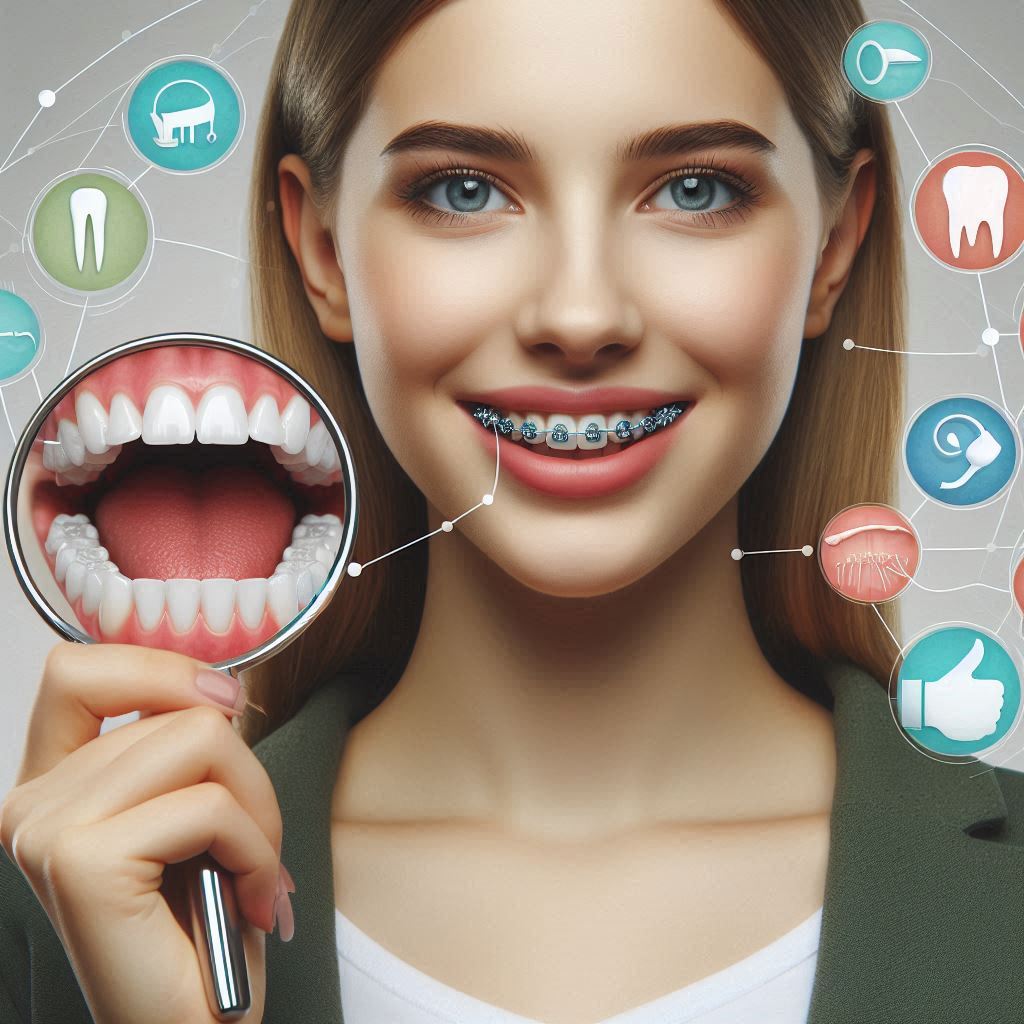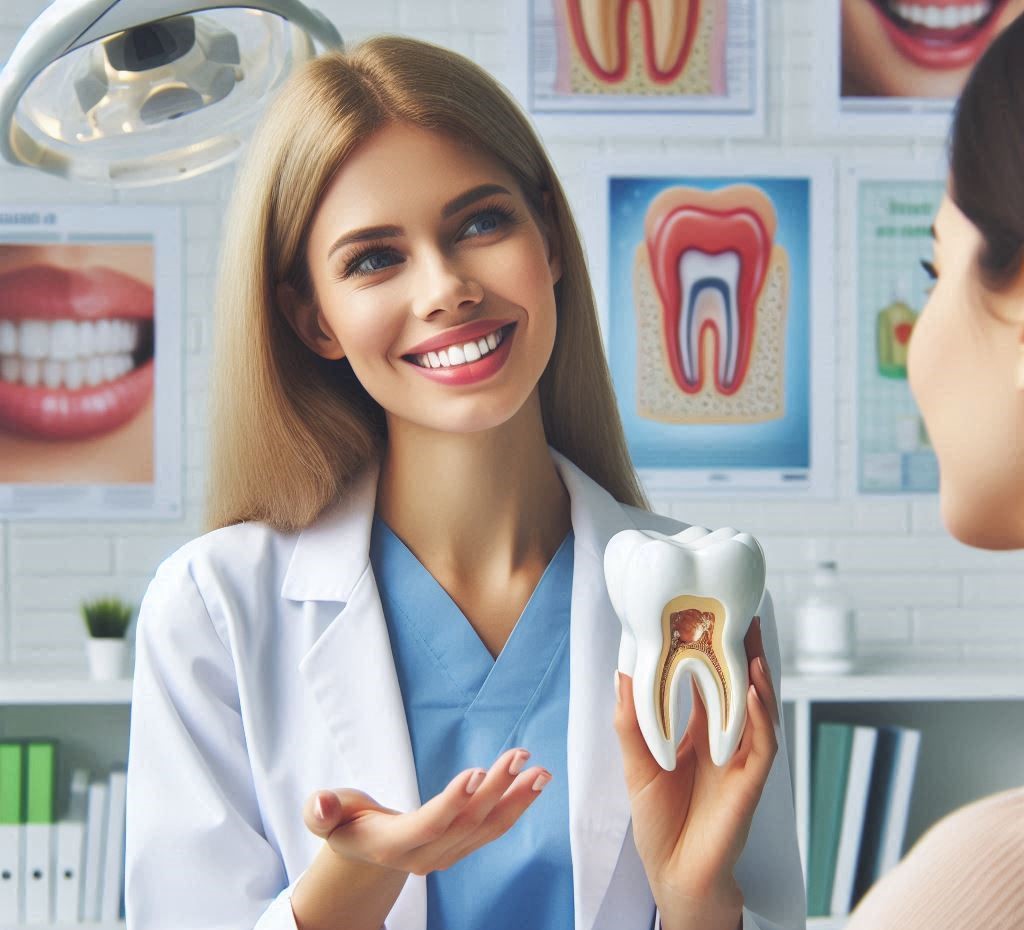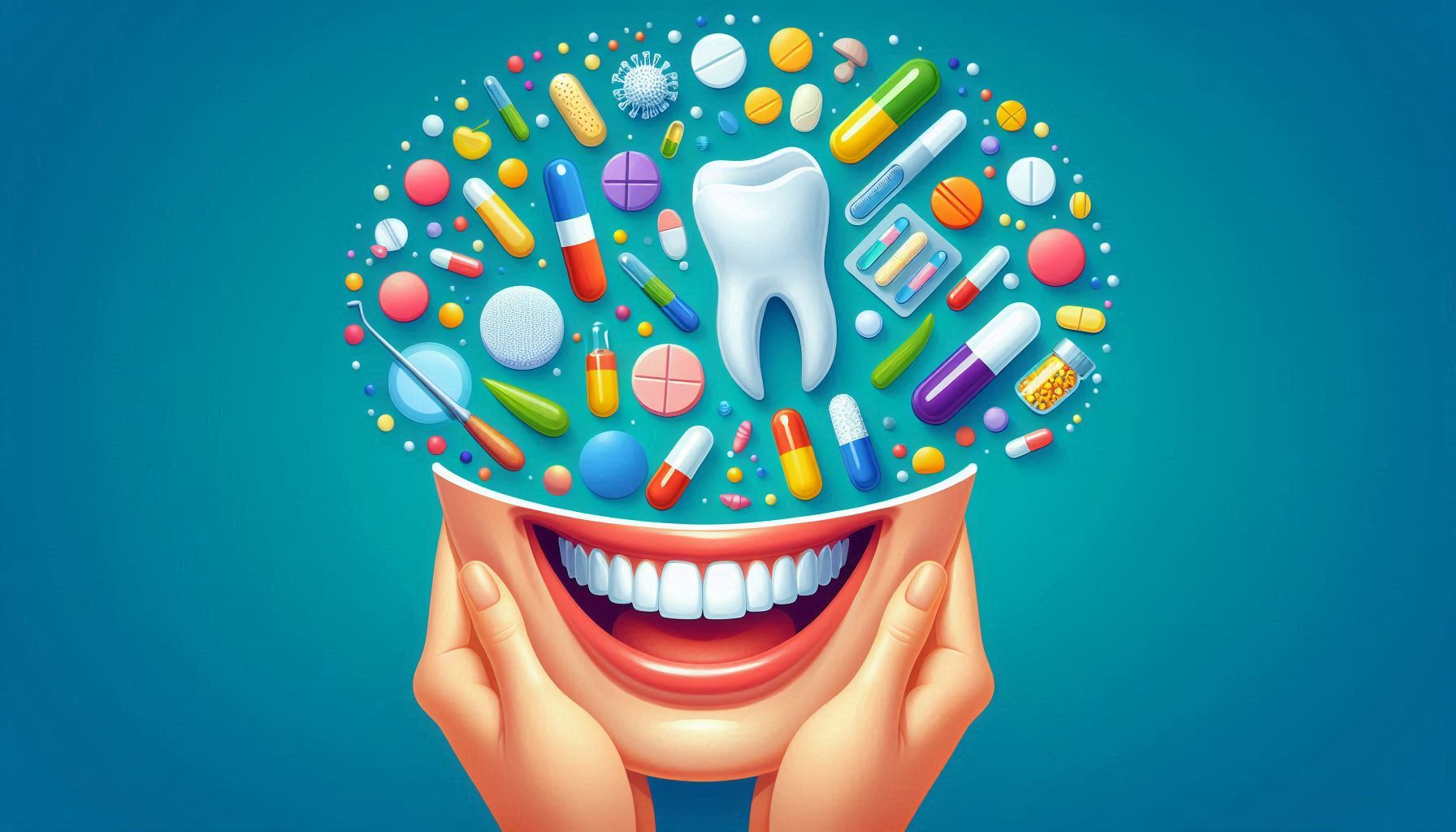Orthodontics is a specialized branch of dentistry focused on diagnosing, preventing, and correcting misaligned teeth and jaws, collectively referred to as malocclusions. While many people associate orthodontic treatment primarily with improving the aesthetic appearance of the teeth and smile, its benefits extend far beyond mere cosmetic enhancement. Orthodontics plays a crucial role in improving the functional aspects of oral health, particularly in regard to speech and chewing function, both of which are vital for daily life and overall health.
Orthodontics addresses issues that might be easy to overlook but are essential for proper oral function. Malocclusions—such as overbites, underbites, crossbites, and open bites—can directly interfere with how we speak and chew, potentially leading to discomfort, inefficiency, and self-consciousness. By correcting these misalignments, orthodontic treatment can not only restore a person’s physical appearance but also significantly enhance the functionality of their teeth, jaws, and overall oral system.
In this guide, we will explore how orthodontic treatment improves two key aspects of oral function: speech and chewing. We will discuss how malocclusions can affect these functions and how orthodontic interventions can correct these issues, leading to better health, enhanced comfort, and improved quality of life.
The Role of Teeth and Jaws in Chewing Function
Understanding Chewing Function
Chewing, also known as mastication, is an essential process that starts the digestive journey. The role of the mouth during chewing is multifaceted. The teeth, jaw muscles, and tongue all work in unison to break down food into smaller, more digestible pieces, which is crucial for proper digestion. This process involves the coordinated movements of the jaws, teeth, and facial muscles to cut, tear, and grind food. The teeth themselves serve different functions based on their position in the mouth. Incisors (the front teeth) are used for cutting, canines for tearing, and molars for grinding and crushing food.
The proper alignment of the teeth and jaws ensures that each part of the mouth performs its function efficiently. When the teeth or jaws are misaligned, however, the efficiency of the chewing process can be significantly impaired. People with malocclusions may experience difficulty in chewing, discomfort, or even pain during meals, all of which can affect their nutritional intake and overall well-being.
How Malocclusions Affect Chewing
A malocclusion refers to an abnormal alignment of the teeth and/or jaws, which can interfere with normal oral function. There are several different types of malocclusions, each with its own unique impact on chewing.
- Overbite: An overbite occurs when the upper front teeth excessively overlap the lower front teeth. This condition often leads to inefficient chewing because the teeth do not come together in an ideal way to grind food. Individuals with a pronounced overbite may find it difficult to bite into certain foods or may experience discomfort when chewing.
- Underbite: In an underbite, the lower teeth protrude beyond the upper teeth. This misalignment can affect the efficiency of the chewing motion by forcing the lower jaw into an unnatural position during biting and grinding. Over time, this can cause muscle strain and joint discomfort, leading to inefficient food breakdown.
- Crossbite: A crossbite occurs when some of the upper teeth bite inside the lower teeth, often on one or both sides of the mouth. This condition can lead to an uneven distribution of force when chewing, which makes it difficult to grind food uniformly. It can also cause wear and tear on the teeth, leading to tooth sensitivity and increased risk of tooth decay.
- Open Bite: An open bite is characterized by a gap between the upper and lower teeth when the mouth is closed. This misalignment often results in an inability to properly crush food between the teeth, making it hard to break down tougher or fibrous foods. It can also cause individuals to chew with only certain areas of their teeth, leading to an imbalanced chewing function and, over time, jaw fatigue.
In all of these cases, the misalignment of the teeth and jaws compromises the efficiency of chewing, which can impact nutrition, digestion, and overall comfort during meals. When food is not broken down properly, it can affect digestion and cause long-term discomfort or pain.
The Impact of Orthodontics on Chewing
Orthodontic treatment, particularly the use of braces, aligners, and other devices, aims to correct these malocclusions by gradually moving the teeth and jaw into more optimal positions. This realignment allows the teeth to meet more evenly, improving the bite and enabling more effective chewing.
For instance, braces are able to reposition the teeth to close gaps, eliminate overbites or underbites, and address crossbites or open bites. As the teeth move into better alignment, the pressure exerted on the teeth and jaws during chewing becomes more evenly distributed, leading to greater comfort and efficiency. Over time, orthodontic treatment can eliminate painful symptoms, such as jaw aches or tooth sensitivity, and allow the individual to chew food with greater ease.
In addition to improving the alignment of the teeth, orthodontics can also address issues with the jaw’s positioning. For example, in cases where the upper and lower jaws are misaligned, orthodontists may recommend treatments like jaw repositioning or the use of appliances to ensure the jaws fit together correctly. By optimizing both the teeth and jaw alignment, orthodontic treatment can lead to significant improvements in chewing function.
The Role of Teeth and Jaws in Speech Function
Understanding Speech Function
Speech is another crucial function of the mouth that relies on the coordinated efforts of various structures, including the teeth, tongue, lips, and palate. When we speak, we rely on precise movements of the lips, tongue, and teeth to produce distinct sounds and words. The role of the teeth is particularly important in producing certain consonant sounds, such as “s,” “z,” “f,” and “th.”
Proper tooth alignment is essential for clear and accurate speech production. The upper teeth, for instance, help guide the tongue and lips during the articulation of many speech sounds. When the teeth are misaligned, it can disrupt this delicate process, leading to speech impediments or unclear pronunciation.
How Malocclusions Affect Speech
Malocclusions can have a profound effect on speech clarity and accuracy. Here are some common ways that malocclusions can interfere with speech production:
- Overbite: In cases of an overbite, the upper front teeth may overlap the lower teeth to such an extent that they interfere with the movement of the tongue during speech. This can result in difficulty pronouncing sounds such as “s” and “z,” leading to a lisp or distorted speech. People with severe overbites may also struggle with other sounds, such as “th” or “sh.”
- Underbite: An underbite can cause the lower teeth to protrude beyond the upper teeth, disrupting the positioning of the tongue and lips during speech. This misalignment may make it difficult to pronounce words clearly, especially sounds that require the upper teeth to make contact with the tongue, such as “f” and “v.”
- Crossbite: When a crossbite occurs, the misalignment of the teeth can cause asymmetry in the mouth, which can lead to a lisp or difficulty articulating certain consonants, such as “t,” “d,” or “k.” This is because the tongue cannot properly position itself against the teeth to produce these sounds.
- Open Bite: An open bite creates a gap between the upper and lower teeth, making it difficult for the tongue or lips to make proper contact when producing certain sounds. This can impact the clarity of speech, especially for sounds that require lip closure, such as “b,” “p,” or “m.”
In all of these cases, malocclusions can lead to speech impediments or difficulties, affecting not only the clarity of speech but also self-confidence and communication effectiveness.
The Impact of Orthodontics on Speech
Orthodontic treatment can play a key role in improving speech by realigning the teeth and jaw. By repositioning the teeth, orthodontics ensures that the tongue, lips, and teeth are able to work together effectively during speech.
For example, when braces or clear aligners are used to correct an overbite or underbite, they can realign the teeth in such a way that the tongue can move freely and make proper contact with the teeth during speech. As a result, individuals who had previously experienced speech difficulties due to dental misalignments may find that their speech becomes clearer and more natural after orthodontic treatment.
Orthodontics also has the potential to correct crossbites and open bites, which are conditions that can cause significant disruption to speech production. By realigning the teeth and ensuring that the upper and lower teeth come together properly, orthodontic treatment can make it easier to pronounce a wide range of speech sounds.
In addition, addressing these dental issues may lead to increased confidence in speaking, particularly for individuals who were self-conscious about their speech due to a malocclusion. Clearer speech can enhance an individual’s ability to communicate effectively in both personal and professional settings.
Specific Orthodontic Treatments and Their Effects on Function
Braces
Traditional braces are the most widely recognized orthodontic appliance and are highly effective in treating a range of malocclusions. Braces consist of metal or ceramic brackets that are attached to the teeth and connected by wires. The orthodontist adjusts the tension on the wires over time to gradually move the teeth into better alignment.
Braces can correct issues such as overbites, underbites, crossbites, and open bites, all of which can significantly impact chewing and speech function. As the braces reposition the teeth, the individual may begin to notice improvements in both their chewing efficiency and speech clarity.
Clear Aligners (e.g., Invisalign)
Clear aligners, such as Invisalign, are a more discreet and comfortable alternative to traditional braces. These custom-made, removable plastic trays gradually shift the teeth into better alignment. Clear aligners can address mild to moderate malocclusions, including misaligned teeth, slight overbites, and mild crowding.
Clear aligners can be particularly advantageous for individuals who need to improve their speech or chewing function but are concerned about the visibility of traditional braces. While they may not be as effective for severe cases of malocclusion, they offer a less intrusive option for those with more cosmetic concerns or mild functional impairments.
Expanders and Other Appliances
In some cases, orthodontists may recommend appliances like palatal expanders or bite blocks to address issues with the jaw, such as narrow arches or misaligned jaws. A palatal expander, for instance, is used to widen the upper jaw to correct crossbites or other issues with the bite. This type of appliance can make a significant difference in both chewing function and speech by ensuring that the teeth fit together properly.
Retainers may also be used after active orthodontic treatment to maintain the new alignment of the teeth and prevent relapse.
Conclusion
Orthodontics is not just about creating a beautiful smile—it is a therapeutic approach to restoring the proper function of the mouth. Whether it’s improving the ability to chew food efficiently or enabling clearer speech, orthodontic treatment can have a profound impact on an individual’s quality of life. By correcting malocclusions that affect the alignment of the teeth and jaws, orthodontics provides relief from discomfort and enhances the efficiency of both chewing and speaking.
If you’re struggling with chewing or speech issues due to malocclusions, orthodontics could be the key to improving your oral function. By working with a qualified orthodontist, you can develop a treatment plan that addresses your specific needs and helps you achieve a healthier, more comfortable mouth.
SOURCES
Anderson, L. & Smith, J. (2018). The impact of orthodontics on functional oral health. Journal of Clinical Orthodontics, 52(3), 120-128.
Bowers, A. M. & Jackson, R. E. (2020). Advances in orthodontic appliances and their effects on speech and mastication. American Journal of Orthodontics, 158(6), 701-710.
Dawson, P. E. (2019). Functional occlusion: From TMJ to smile design (2nd ed.). Mosby.
Eriksson, M. M., & Peterson, K. E. (2017). Malocclusion and its effect on speech development and chewing function. Scandinavian Journal of Dentistry, 45(1), 38-45.
Feldman, H. J. (2021). Orthodontic treatment and its impact on speech disorders. The Journal of the American Dental Association, 152(4), 285-293.
Goldstein, M. J., & Kasper, A. S. (2015). Orthodontics: Principles and practice (5th ed.). Elsevier.
Hartzell, L. M., & Miller, R. A. (2016). The role of orthodontics in the correction of chewing dysfunction. Journal of Prosthetic Dentistry, 115(4), 508-514.
Lee, H. Y., & Kim, S. B. (2018). The relationship between malocclusion and speech in children. Clinical Oral Investigations, 22(7), 2783-2790.
Miller, S. E. (2014). Chewing and speech: A complex interplay of oral health and function. Dental Clinics of North America, 58(4), 697-705.
Richmond, S. (2017). Orthodontics: Current principles and techniques (5th ed.). Elsevier.
Shapiro, P. J., & Singh, G. K. (2019). Functional outcomes of orthodontic treatment on chewing and speech: A longitudinal study. Journal of Pediatric Dentistry, 41(1), 48-55.
Thomas, R. E., & Lee, S. T. (2020). Orthodontic interventions for functional rehabilitation: Impacts on chewing and speech. International Journal of Orthodontic Therapy, 62(2), 251-259.
Weiss, J. S., & Becker, M. A. (2015). Effect of malocclusion on speech patterns and clarity. Journal of Speech Pathology, 25(3), 113-119.
HISTORY
Current Version
February 15, 2025
Written By:
SUMMIYAH MAHMOOD




